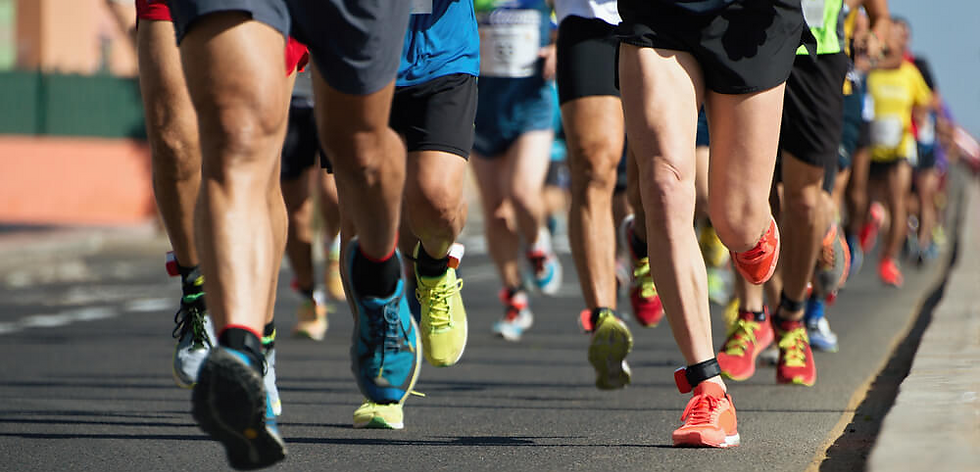BACK PAIN IN RUNNERS
- Omkar Shirke

- Apr 22, 2022
- 3 min read
Updated: Jun 1, 2023

Introduction
Have you ever wondered? Why your back hurts while you run? Or after your run gets over? Low back is very common occurrence in long distance runners, there are several reasons associated with it. Before treating the exact cause of the pain it’s important to thoroughly evaluate it. The cause can be simple as your inactivity or weakness of your buttock muscle (gluteus maximus). When you run your body moves through various phases of running gait, for efficient running you require adequate mobility at your hip and stability at your spine during each gait cycle. In cases where the mobility at the hip and stability at your back is not adequate the curve your lower back region is exaggerated which leads to tilting of the hip in front. All these compensations make your buttock muscle difficult to engage or support while running, which may lead to over activity of your lower back spinal muscle.
Weakness in the lower back and abdominal muscles causes loss of movement control in the muscles while running, leading to increase of mechanical load at your spine{1}.
When you consider your spine, your spinal bones (vertebrae) are stacked on one another. To have a good mobility at your spine these vertebrae should move one above the another, so if we take an example of a runner who has a desk job and prolonged sitting hours may tend to have decreased mid back (thoracic ) spine mobility. In this type of runner there will be hyperactivity in the lower back region while running.

Poor running technique also contribute to the low back pain. During the initial phase of your running gait cycle if the knee angle is more than 160 degrees it reduces the shock absorption capacity in your knee and hip joint similarly in mid stance of your gait cycle if your knee bending angle is more than 140 degrees causes the same effect. Reduced shock absorption at your hip reduces the pelvic and lower back control and increase in ground reaction forces which affects your lower back region causing pain.
A runner may experience pain during a run, after a run, either a pain be localised at the lower back region or may radiate down the legs.
How to treat it?
When it comes to treating back pain in runners, a thorough evaluation of the cause of the problem is very important. Stability, mobility and strength are the 3 important factors to look into when treating lower back pain. Strengthening of the deep back muscles (extensors) and abdominal muscles is important to avoid abnormal mechanical loading while you run. Mobility drills to avoid the inactivity at the thoracic or mid back region. To have a better stability at your spine it’s important to have good hip and back control this can be achieved through strengthening of your buttock muscle {2}.
Deep tissue release massage to be taken by every runner periodically to avoid tightness in the muscles. Neuromuscular dry needling can be used to manage the trigger points or tension knots in the overactive superficial lower back muscles.
How to prevent it?
When it comes to preventing back pain as a runner one should remember that running is a sport so treat like it. Regular warm up and cool down is very essential to avoid tightness in your muscles. As a runner if you have any specific goals like running an ultra-marathon or full marathon then take a goal specific training. Doing your sport specific fitness testing and running gait analysis with us at PhysioQinesis by our strength conditioning coach so that we can help you not only to tackle your injuries but also to reach your goal as a runner.
‘There is no one giant step that does it; it’s a lot of little steps’-Peter A.Cohen
References-
1] Raabe ME, Chaudhari AMW. Biomechanical consequences of running with deep core muscle weakness. J Biomech. 2018;67:98-105. doi:10.1016/j.jbiomech.2017.11.037.
2] Mitchell UH, Johnson AW, Owen PJ, Rantalainen T, Belavy D. Transversus abdominis and multifidus asymmetry in runners measured by MRI: a cross-sectional study. BMJ Open Sport Exerc Med. 2019;5(1):e000556. Published 2019 Sep 6. doi:10.1136/bmjsem-2019-000556




Comments